Overcoming Obstacles
By Feel Motivated • September 20, 2014
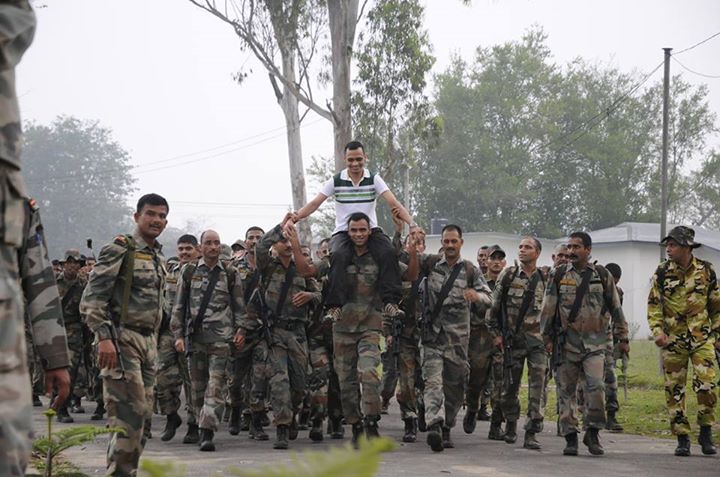
This is a story of courage.
The true story of incredible courage and determination of a soldier, who I've had the privilege of having served with and being friends with, of knowing personally and very closely. Someone who would just not take "NO" for an answer, despite the incredibly violent challenges life threw at him. A brilliantly inspiring story that needs to be told. Admittedly it is a little long by FB standards. But let me assure you it is worth it - for those of you who would like to be gob smacked by the depth of courage and fortitude that the human spirit is capable of.
Happy Reading .....
Soldier of Fortune (The Untold Special Forces Story)
There is inevitably a strange, almost laboured disconnect between the urgent, distinctive ŌĆśpopŌĆÖ of the speeding bullet as it whizzes past you and the apparently languid, disarmingly slow movement of those around you. A sardonic, yet glowing affirmation of EinsteinŌĆÖs theory of relativity, if you will. Those who have been in active combat and had the privilege of being fired at, would know. Deependra Singh Sengar surely did. More than just a couple of times. But let me rewind just a little bit.
A day after ValentineŌĆÖs Day, 1998. Sengar had just been received at the Guwahati airport by the unitŌĆÖs escort team. At 5ŌĆÖ6ŌĆØ and 52 kgs in weight, you could easily mistake him for the average postgraduate student at Guwahati University. A white tee, regulation denims & sneakers. No shades though ŌĆō He scarcely had the time, inclination or the tolerance for show biz. His travel clothes reflected his persona. Practical and as unassuming as unassuming could get. Sengar was re-joining the unit in active operations in the North East, after weeks of pleading, screaming & struggling against the orders of Col Ivan Crasto, the Commanding Officer, to man the administrative rear echelon of the unit in a cosy, sleepy town in Himachal Pradesh. That is who he was ŌĆō a man of action. And men of action, as you would know, abhor routine administration.
The first message he overheard, 15 mins into the drive, on the secured communication radio link was garbled. 5-6 senior militant leaders in a house, armed with automatics, pin point location, high credibility of info, apparent transit profile, likely to move out soon. The Quick Reaction Team (QRT) from the unit was starting out, but could hit target only in an hour. Sengar quickly realised that with a short detour, he could be at the target in 20 mins. Saving 40 mins could mean the difference between success and failure. A flurry of messages later, Sengar had convinced the Battalion HQs that he and his escort team were best positioned to get there and initiate contact with the militants before they disappeared. The QRT could follow up, later. Now, escort teams are usually a rag tag team of whoever is available, put together to stay within bounds of the directions imposed by the Brigade HQs. Fully kitted out, sure ŌĆō weapons, ammo, secured communication, the works. But still, certainly not the first choice of guys for going into combat with. But that didnŌĆÖt deter Sengar. He swung in, picked up the spotter & hit the target in 20 mins, as planned. A short, sharp exchange of fire ensued. 2 reds down, 3 had fled. It is then that Sengar realised he had been hit. Two bullets had pierced through his abdomen, making a clean almost unnoticeable entry in the front and a classic, disproportionate exit wound in his back. What they call in the medical world, rather disparagingly, a ŌĆścleanŌĆÖ shot.
The rest was a blur. The flurry of the evacuation process. Hand carried, on four wheel drive, by chopper. Through the local hospital in the neighbourhood, and then to the Base Hospital at Guwahati. The long, unending line of surgeries commenced. From specialist to super specialist. Cut, sew & cut again. At the end of about 15 days of chopping and pasting, the docs were confident of partial recovery in a time frame of about 18-24 months. A miracle, they called it. But then, they hadnŌĆÖt seen miracles - as yet. Sengar was no pushover, who would, or could be tied down to a hospital bed. He was up and about in 45 days. He read books on his condition called colostomy and realized that psychological recovery was as important as the medical one. ThatŌĆÖs what he needed to know and he started doing what was in his reach - whether strict army hospital rules allowed or not. Sneaking out of the hospital, hobbling along to the theatres to watch practically every movie worth watching. & some which didnŌĆÖt fit even that bill. 60 days on from that fateful day, a Unit officer was getting married. Sengar, attired in a Lungi & a kurta (he couldnŌĆÖt wear anything else ŌĆō the scars were still raw), with tubes and bags (If you must know - A colostomy bag) practically but immodestly hanging out of his modest frame, hired a car and travelled 5 hours one way, to Dehradun. ŌĆ£Huh? To attend a fricking marriage??!!!???ŌĆØ Well, consider yourself forgiven, because Sengar wasnŌĆÖt the type whoŌĆÖd let anything ŌĆō certainly not 25 grams worth of random molten lead that burnt independent, solitary furrows through his intestines come in the way of having the pleasure of seeing one of his mates being led, willingly to the gallows!!
Sengar hated hospitals. Much to the deep dismay of a bevy of nurses there. He was back in the unit by early May, 98. The docs, fed up with his constant supplications to be released, grudgingly tore down the baneful baggage of precedence, and allowed him to get back to the unit, with the solemn promise that he would not exert himself, and stay confined to the unit HQs (chuckle chuckle). Now, that is a tad difficult for someone who was called ŌĆ£RocketŌĆØ by the junior officers - Sengar was the recepient of the coveted "Dagger" on the Commando course, the one who was the undispued King of the different competitive runs in a battalion, known for having amongst the most physically fit officers and men.
Around this time, a training exercise was being conducted in the eastern sector and Sengar saw a chance to prove his fitness. He pleaded with Col Crasto to be allowed to get there, to ŌĆśman the telephoneŌĆÖ. I was not present there during his pleadings, but I can almost visualise Col CrastoŌĆÖs plight. Once Sengar started with his requests, he stayed at it, wearing down his ŌĆśenemyŌĆÖ with nauseatingly nagging perseverance. Crasto finally caved in after Sengar was able to convince the doctors to pronounce him ŌĆ£fitŌĆØ for active duty. Sengar had amazingly, defying every single precedent of recorded medical recovery in cases similar to his, convinced the docs to upgrade his medical category to SHAPE1. He pleaded, he struggled, he nagged, he nudged, he begged, he threatened, and he resorted to blatant emotional blackmail of the vilest means known.
In the middle of the exercise, news broke about the Kargil conflict and the unit was to airlift a team for the Kargil war. Sengar was back to doing what he loved best - back to action, leading a team. He led his team to capture Neelam post in the Kargil war which was the highest post captured in the whole engagement by the Indian Army. By August 99, officially the Kargil war was over, but escalated engagements along the LOC still required the unit to stay in the area. And SengarŌĆÖs team was in the middle of action ŌĆō again.
In Sep 99, Sengar was hit again. A violent fire fight with a group of freshly inducted militants. A burst of fire from an AK-47 tore through his upper thigh and hip. The story of that encounter is fitting enough for another chapter or two, but let me stick to Sengar for now. Bleeding profusely and his hip bone in tatters, we knew if we didnŌĆÖt evacuate him in time, weŌĆÖd lose him. The sub plot is of a paratrooper in the Divisional HQ, a chopper pilot, who was on a routine training mission, flying a Cheetah helicopter who had coincidentally touched down at a helipad in the Divisional HQs, while this fire fight was going on. He learnt of Sengar having been hit, and without waiting for authorisation, violating every rule in the book, flew in, landed at a hastily secured patch at the base of the hill feature and evacuated Sengar to the hospital through a route not allowed for Indian aircrafts - All this to save some time to reach hospital. To increase chances of survival for Sengar who was losing blood despite the best possible patch up by the soldiers of his team during the firefight. From the time he was hit, Sengar reached hospital in 45 mins. A couple of more mins of delay, and he would have been history.
Back to the ŌĆścut n sewŌĆÖ story; of gentle, well-intentioned butchers with medical degrees and lovely, disarmingly pretty nurses. Only this time, it was more serious than the first. To cut (sic) a long story short, he survived. Barely. He was transferred to DelhiŌĆÖs super speciality Army hospital two months later and it was then, that his parents were brought to Delhi and the news broken. All this while he was told that he would recover and be back in action in a short time. It took him another month to finally learn from the docs their verdict ŌĆō He would never walk again. This was a body blow (pun unintended) even for a man with the kind of resilience and strength of character as Sengar. He decided to quit the Army. He had no interest in serving in those fabulous Olive Greens, consigned to peddling files at the back end. Once he had waded through the rivers of emotion, which lasted all of 24 hours, he decided to take charge of his apparently fragile destiny, determined to chart out its fresh course, held firmly by its proverbial horns.
Sengar started aggressively researching options of an alternate career path. He was 30, single and had the energy of a bull - or three. It didnŌĆÖt take him long to realise that he needed to tame the beast called ŌĆśCATŌĆÖ - the Common Admission Test, to take a shot at passing through the portals of the premier business schools. So he did.
He went about diligently identifying the best coaching classes in the business of preparing for the exams, 11 months away. In this process, as he did a SWOT analysis, he identified that his analytical skills werenŌĆÖt what they once were, dulled by constant exposure to the high life ŌĆō Gunpowder, standard issue Army rations, and the scum of the earth called militants. Not necessarily in that order. So, he decided to take on the mean ask of conquering Arithmophobia ŌĆō his paranoia of numbers. He got hold of all the math books available and diligently went through them - NCERT, class four to class 12. For starters, a class eighth student ŌĆō son of his physiotherapist, helped him. He then enrolled for classes. Minor hiccups like the fact that he had to be carried from his hospital bed to the car, or the fact that they had to make special provision for him at the classes, so he could recline on an ad hoc chair and take notes didnŌĆÖt bother him one bit. He laboured on stoicaly - eleven months of excruciatingly painful days and long, midnight oil nights.
Sengar took the exam in Dec 2000. Based on his results, he got a call from 15 of the 16 B schools he had applied to - IIM (A), IIM (B), IIM (C), IIM (L) ŌĆ”. A veritable whoŌĆÖs who of the B school list. Even topping a few. Four days after he hung up his beloved Olive Greens, he got married (Frying pan to the Fire). Eight days later, he joined the Indian Institute of Management, Ahmedabad. Two brilliant years of number crunching analysis later, Sengar graduated; on crutches, with distinction.
Today, Sengar is a top notch senior management professional with Microsoft, in Singapore. A doting wife, two wonderful kids. If you thought thatŌĆÖs the update on this brilliant story of incredible proportions, wait. Because, there is one final flourish. After over ten long years on crutches, he decided he had had enough. He chucked his crutches into a corner against medical advice & decided to rough it out. Slowly, and with tremendous perseverance, he started walking. In under a year, he was going for short jogs. In Sep 13, on a trip to India, he decided to revisit the unit. He got in touch with the Commanding Officer, who invited him to go for a run with the unit in the standard Battle Physical Efficiency Test - with loaded backpack and a weapon. And Sengar did.
The ŌĆśRocketŌĆÖ had returned. To a heroŌĆÖs welcome.
https://www.facebook.com/notes/bindair-dundat/soldier-of-fortune-the-untold-special-forces-story/10152339117838107
PREVIOUS STORY NEXT STORY SHARE YOUR STORY
Many readers told us they started writing down the small positives in their day, and this gratitude journal became a favorite. While others use these kindness cards for kids to help teach them compassion, empathy and encouragement.
Click Here For The Most Popular On Sunny Skyz
 Boy With Down Syndrome Nails The Whitney Houston Challenge, And The Crowd Goes Wild
Boy With Down Syndrome Nails The Whitney Houston Challenge, And The Crowd Goes Wild
 Husband Rents Mall Store To Share His Late Wife's Beloved Christmas Display
Husband Rents Mall Store To Share His Late Wife's Beloved Christmas Display
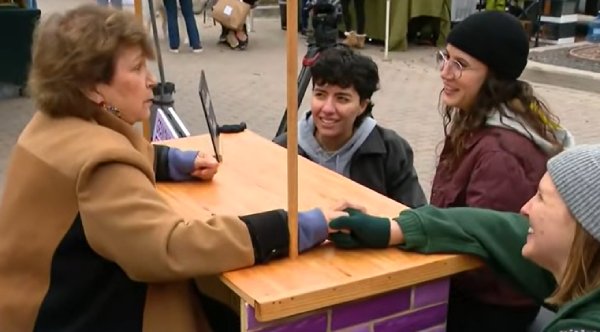 The ŌĆśGrandma StandŌĆÖ Is Bringing Comfort And Connection, One Conversation At A Time
The ŌĆśGrandma StandŌĆÖ Is Bringing Comfort And Connection, One Conversation At A Time
 LoweŌĆÖs Staff Refuse To Give Up On Missing Cat, Find Her 85 Miles Away
LoweŌĆÖs Staff Refuse To Give Up On Missing Cat, Find Her 85 Miles Away
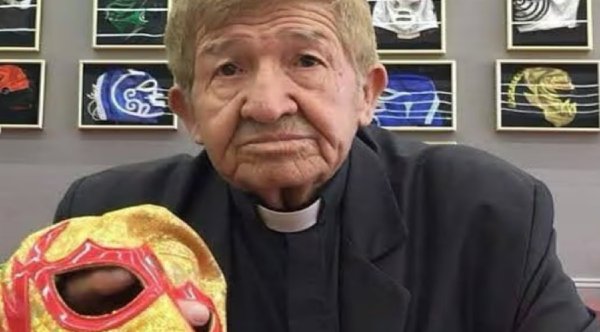 This Priest Secretly Became A Masked Wrestler To Fund An Orphanage
This Priest Secretly Became A Masked Wrestler To Fund An Orphanage
 The Kindness Continues For These Two Kings Who Went Viral
The Kindness Continues For These Two Kings Who Went Viral
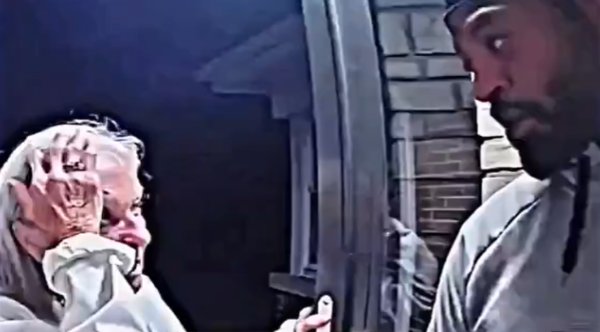 She Was Ready For A Fight With Her Neighbor. His Response Changed Everything
She Was Ready For A Fight With Her Neighbor. His Response Changed Everything
 Texans Owner Gets Left Hanging On Live TV ŌĆö What The Media Team Did Next Is Hilarious
Texans Owner Gets Left Hanging On Live TV ŌĆö What The Media Team Did Next Is Hilarious
 After 2 Years Apart, Siblings In Foster Care Are Finally Reunited
After 2 Years Apart, Siblings In Foster Care Are Finally Reunited
 Dad Jokes With Tom Hardy And His Dad
Dad Jokes With Tom Hardy And His Dad
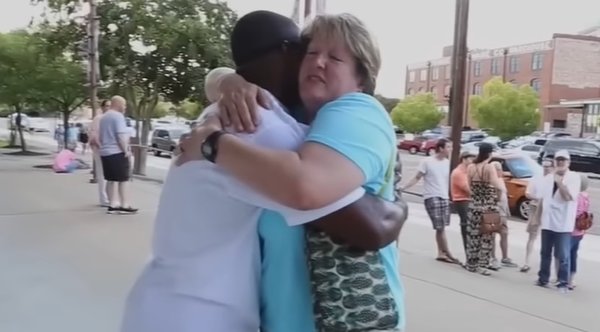 The Hug That Went Viral On Facebook
The Hug That Went Viral On Facebook
